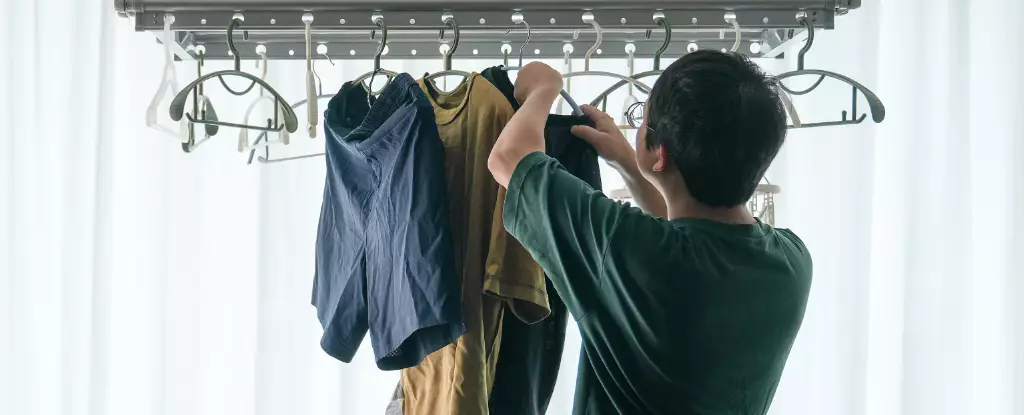In recent months, the ability to hang laundry outside has dwindled due to relentless winter storms, characterized by freezing temperatures and harsh winds exceeding 100 mph. While most are forced to dry their clothes indoors, the implications of this common practice may be graver than one might expect. This article explores the relationship between indoor clothes drying, mold growth, and associated health risks, offering insights into how we can mitigate these dangers.
The Unseen Consequences of Humidity
Drying clothes indoors creates a microclimate within our homes that can foster mold growth. Unsurprisingly, poorly ventilated spaces are a breeding ground for moisture, particularly when wet garments are left unattended. Mold, a collective term for various fungi, thrives in conditions characterized by high humidity and cooler temperatures. The presence of mold can quickly turn any indoor environment into a health hazard, providing an uncomfortable musty odor and visible dark patches on walls or ceilings.
The burgeoning presence of mold isn’t just an aesthetic nuisance; it signifies potential long-term health implications. For individuals with compromised immune systems or pre-existing respiratory conditions, the risk escalates. Mold spores, which can spread effortlessly through indoor air, can trigger allergic reactions and exacerbate asthma, leading to significant respiratory distress. Understanding the physiological implications of mold exposure underlines the importance of evaluating our home-drying habits.
The body naturally contends with minute quantities of mold spores daily without significant adverse effects due to our immune system’s prowess. The role of macrophages within the lungs is critical; these immune cells patrol the alveoli, proactively eliminating harmful agents, including fungal spores. However, persistent exposure in damp environments can overwhelm these defenses, particularly for those with existing vulnerabilities.
Individuals suffering from chronic respiratory diseases like asthma or chronic obstructive pulmonary disease (COPD) face heightened risk. When exposed to mold, immune responses can lead to acute inflammation, constricting airways and making it more difficult to breathe. Unfortunately, the situation becomes dire when mold spores put down roots, quite literally, by budding into mycelium—a complex network that can block airways and cause internal bleeding.
The Rising Threat of Antifungal Resistance
When mold infections occur, antifungal medications such as azoles are typically the frontline treatment. However, an alarming trend has emerged: increasing resistance to these drugs has been documented, which poses a serious challenge to effective treatment. Drug resistance often develops when fungal populations in the environment are exposed to antifungals, particularly in agricultural settings where the same medications used in healthcare are employed to protect crops.
Climate change presents another variable in this equation. Elevated temperatures can bolster resistance among fungi, indicating that environmental shifts may be facilitating this worrisome trend. The potential emergence of previously harmless mold species into human pathogens reinforces the necessity for ongoing research and surveillance in the field.
In 2020, the tragic death of toddler Awaab Ishak, attributable to excessive mold exposure due to damp living conditions, became a pivotal moment in public health discussions. His untimely demise prompted the enactment of “Awaab’s Law” in the UK, obligating landlords to promptly address dampness issues in rental properties, thereby mitigating tenant exposure to dangerous mold levels. This legislative change marks a critical step in reinforcing the significance of maintaining a mold-free living environment.
To protect ourselves from the dangers associated with indoor mold growth, proactive measures are paramount. Improved ventilation is essential; opening windows for airflow can make a significant difference, as can utilizing dehumidifiers to maintain optimal humidity levels in the home. Investing in heated drying racks also presents a viable solution for winter months, allowing for safe indoor drying without exacerbating moisture levels.
As winter storms challenge our routines, it is crucial to remain vigilant about indoor drying practices and their potential ramifications. A proactive approach to moisture control within our homes can significantly reduce mold presence, protecting our health and the well-being of our loved ones. The intersecting issues of mold exposure, health risks, and shifting environmental conditions underscore the need for a concerted effort to foster healthier indoor environments for everyone.


Leave a Reply